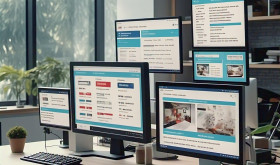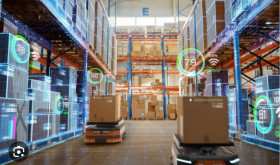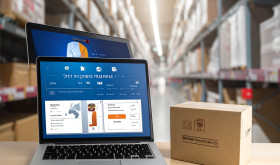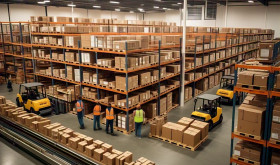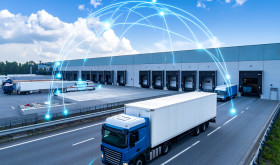
In today’s fast-moving digital world, people want shopping to be quick, easy, and free of problems. The shopping journey, from clicking “Add to Cart” all the way to receiving the package at home, matters at every stage. Companies that fail to make this smooth and hassle-free may lose buyers to businesses that can get it right.
An order management system helps transform how this works. It serves as the backbone of today’s commerce by linking sales channels, inventory tools, warehouses, and delivery partners into one system. It handles the entire process from the cart to the customer helping businesses like online stores, retailers, and even big brands fulfil orders faster, more accurately, and at lower costs.
What is an Order Management System (OMS)?
An order management system is a tool that handles and streamlines each part of the order process. It oversees tasks like taking orders, checking payments assigning inventory, packing items in the warehouse, tracking shipments, and handling product returns.
Instead of relying on scattered spreadsheets separate warehouses, or lots of manual back-and-forth, an OMS acts as a single hub. It brings everything together to help manage and view the entire fulfilment process in one place.
The Fulfillment Journey: From Cart to Doorstep
- Order Capture
The process begins when a customer places an order. This can happen online, in a store, or by using a mobile app. An order management system brings all these orders together in one system. It handles sales from various places like online shops, marketplaces social media, or physical stores.
- Benefit: Retailers avoid mistakes like duplicate orders or forgotten ones.
- Customer impact: Shoppers get immediate confirmation of their order, no matter where they choose to buy.
- Inventory Management and Allocation
After capturing an order, the order management system checks inventory availability. It scans stocks in warehouses, distribution hubs, or even stores that might double as fulfilment centres. With advanced systems, inventory can be allocated considering customer location, stock levels, or cost savings.
- Benefit: Companies avoid running out of products or selling items they can’t provide.
- Customer impact: Shoppers know the items they buy are in stock and will be delivered as promised.
- Payment Verification and Fraud Check
The order management system connects with payment systems to verify transactions and check for fraud before processing the order.
- Benefit: Companies manage chargebacks and financial losses better.
- Customer impact: Shoppers feel confident about secure and reliable purchases.
- Order Routing and Warehouse Execution
The order management system determines the optimal fulfilment location and forwards the order there. For businesses with several warehouses or stores, it directs the order to the most efficient location.
Inside the warehouse, the order management system works with warehouse management systems. It handles tasks like picking, packing, and labelling orders.
- Benefit: It boosts how things run, trims down logistics costs, and makes better use of space in storage.
- Customer impact: Orders get packed up and shipped out quicker.
- Shipping and Last-Mile Delivery
The order management system integrates with several carriers to pick the best shipping method. It balances speed, cost, and what the customer wants. It also makes shipping labels, tracks packages live, and sends updates to customers about where their order is.
- Benefit: Businesses see lower transport expenses more flexible options, and fewer shipping mistakes.
- Customer impact: Customers get reliable delivery times and can watch their package’s journey.
- Handling Returns and Reverse Logistics
In retail and e-commerce, dealing with returns is unavoidable. An order management system eases the process of reverse logistics by creating return labels. It also adjusts inventory when items come back and handles refunds or exchanges.
- Benefit: Businesses save effort by cutting down manual work and minimising losses caused by returns.
- Customer experience: Smooth return processes build loyalty and encourage shoppers to come back.
Key Benefits of an Order Management System
- End-to-End Visibility
An order management system gives one clear view of orders, stock levels, and fulfilment status. Team members can track the exact location of any order. This reduces errors and the need for repeated communication.
- Faster Fulfillment
By using automation to route orders, check stock, and pick the best shipping options, an order management system cuts down the time it takes to move an order from start to finish.
- Improved Accuracy
Automation removes mistakes caused by humans during order processing. This ensures customers get what they ordered when they need it.
- Cost Savings
Optimised routes smarter inventory controls, and better shipping choices help reduce logistics expenses. Fewer mistakes and returned items also help improve profits.
- Scalability
An order management system manages thousands of orders across various locations and platforms. This helps businesses expand without losing efficiency.
- Customer Satisfaction
At the end of the day, an order management system creates a better experience for buyers. On-time deliveries and hassle-free returns build trust and loyalty with the brand.
Order Management System in the Omnichannel World
People now shop through many ways. They use online stores, brand websites physical shops mobile apps, and even social media platforms. Handling this kind of omnichannel shopping is tough without an order management system.
An order management system helps with:
- Click-and-collect (BOPIS): Shoppers can place an order online and pick it up from a store.
- Ship-from-store: Stores nearby act as small warehouses to send out orders.
- Endless aisle: If items are unavailable in-store, customers can still order them online and have the products delivered from another location.
An order management system connects these shopping options. It creates smooth and consistent experiences no matter how people choose to shop.
Case Example: Streamlining Retail Fulfillment
Consider a global FMCG company that sells its products through physical shops, its own e-commerce site Lazada, and Shopee. Before using an OMS, the company often ran out of stock online while physical stores had products sitting on shelves. This caused problems like inefficiency and unhappy customers.
With an order management system in place:
- It combined orders from all platforms into one system.
- It managed inventory more between online and physical channels.
- Delivery became 25% faster, and mistakes in orders dropped by 30%.
This led to higher customer satisfaction, lower logistics costs, and stronger revenue growth.
Future of OMS in Fulfillment
Future order management systems will use AI combined with predictive analytics to predict demand, manage inventory ahead of time, and suggest the smartest ways to fulfil orders. Connecting to IoT devices will help share live updates about warehouse or shipping conditions. Meanwhile, blockchain technology might play a role in building trust and clarity in tracking orders.
With customers wanting faster, more affordable, and sustainable deliveries, the order management system will play a key role in reaching top-notch fulfilment goals.
Conclusion
Once a customer clicks “Add to Cart” and waits for their product to arrive, the fulfilment journey is filled with complexities. An order management system has the ability to bring all these steps into a smoother flow. It handles things like tracking the order, managing inventory choosing the right warehouse organizing shipping, and even dealing with returns.
To compete and keep customers happy, retail, e-commerce, and FMCG companies need more than just a basic back-end tool. An order management system acts as a key solution to improve service and gain an edge in the market. Businesses using this technology not only improve how they handle orders but also create longer-lasting relationships with their customers.


